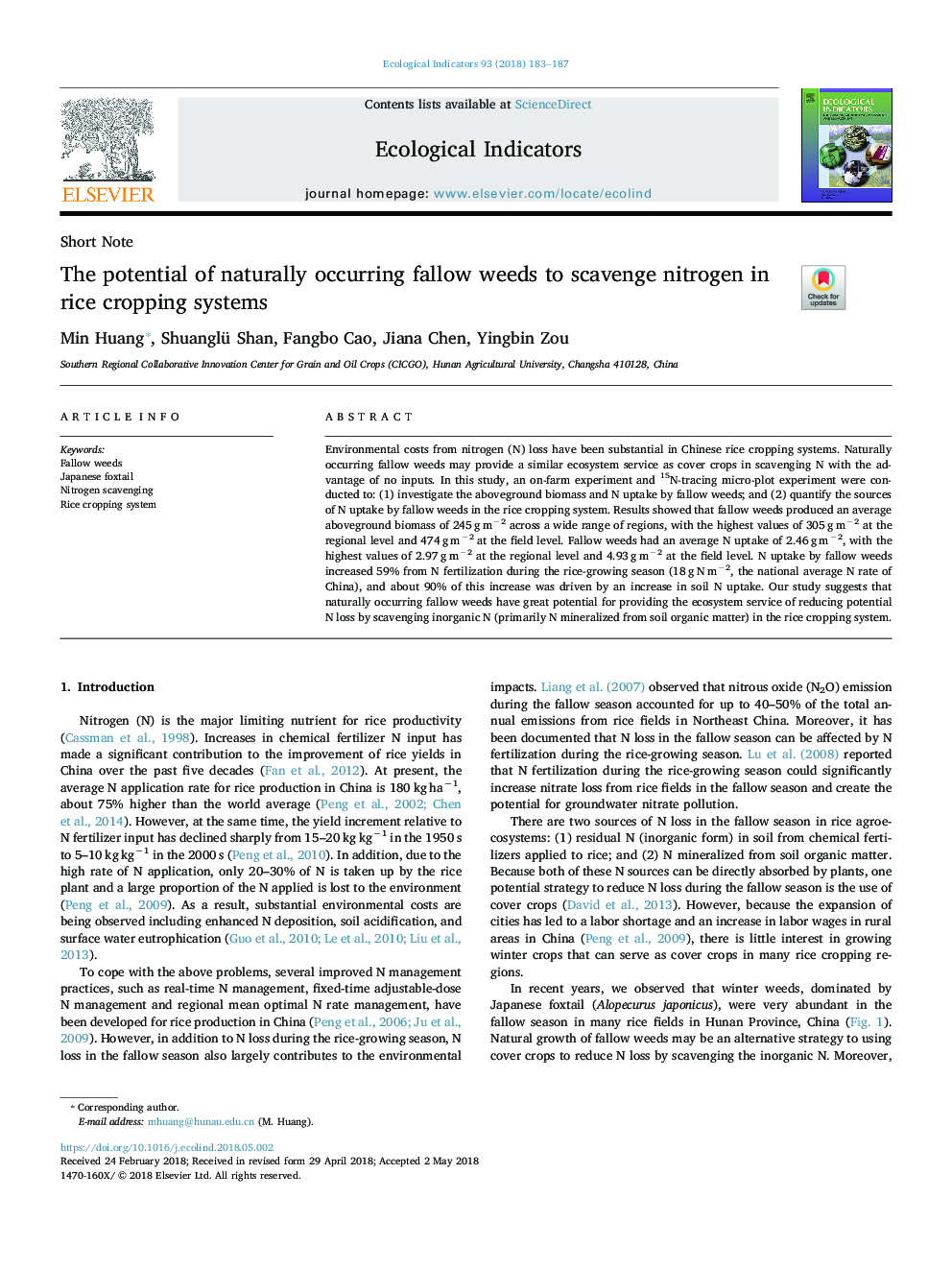| کد مقاله | کد نشریه | سال انتشار | مقاله انگلیسی | نسخه تمام متن |
|---|---|---|---|---|
| 8845109 | 1617109 | 2018 | 5 صفحه PDF | دانلود رایگان |
عنوان انگلیسی مقاله ISI
The potential of naturally occurring fallow weeds to scavenge nitrogen in rice cropping systems
ترجمه فارسی عنوان
پتانسیل علف های هرز طبیعی برای برداشت نیتروژن در سیستم های برداشت برنج
دانلود مقاله + سفارش ترجمه
دانلود مقاله ISI انگلیسی
رایگان برای ایرانیان
موضوعات مرتبط
علوم زیستی و بیوفناوری
علوم کشاورزی و بیولوژیک
بوم شناسی، تکامل، رفتار و سامانه شناسی
چکیده انگلیسی
Environmental costs from nitrogen (N) loss have been substantial in Chinese rice cropping systems. Naturally occurring fallow weeds may provide a similar ecosystem service as cover crops in scavenging N with the advantage of no inputs. In this study, an on-farm experiment and 15N-tracing micro-plot experiment were conducted to: (1) investigate the aboveground biomass and N uptake by fallow weeds; and (2) quantify the sources of N uptake by fallow weeds in the rice cropping system. Results showed that fallow weeds produced an average aboveground biomass of 245â¯gâ¯mâ2 across a wide range of regions, with the highest values of 305â¯gâ¯mâ2 at the regional level and 474â¯gâ¯mâ2 at the field level. Fallow weeds had an average N uptake of 2.46â¯gâ¯mâ2, with the highest values of 2.97â¯gâ¯mâ2 at the regional level and 4.93â¯gâ¯mâ2 at the field level. N uptake by fallow weeds increased 59% from N fertilization during the rice-growing season (18â¯gâ¯Nâ¯mâ2, the national average N rate of China), and about 90% of this increase was driven by an increase in soil N uptake. Our study suggests that naturally occurring fallow weeds have great potential for providing the ecosystem service of reducing potential N loss by scavenging inorganic N (primarily N mineralized from soil organic matter) in the rice cropping system.
ناشر
Database: Elsevier - ScienceDirect (ساینس دایرکت)
Journal: Ecological Indicators - Volume 93, October 2018, Pages 183-187
Journal: Ecological Indicators - Volume 93, October 2018, Pages 183-187
نویسندگان
Min Huang, Shuanglü Shan, Fangbo Cao, Jiana Chen, Yingbin Zou,
